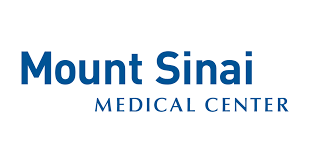 Your surgical service is the engine that drives your hospital’s bottom line, and any inefficiency can disrupt everything from the number of surgical cases your hospital handles to its ability to attract new patients and physicians – thus hindering profitability.
Your surgical service is the engine that drives your hospital’s bottom line, and any inefficiency can disrupt everything from the number of surgical cases your hospital handles to its ability to attract new patients and physicians – thus hindering profitability.Key to achieving a highly efficient surgical program is the strength of your anesthesia partner and anesthesia program. A well-functioning anesthesia service will help keep your operating rooms running on schedule, track and ensure achievement of quality metrics, and provide leadership and coordination for your entire perioperative program. It will contribute to the overall success of your hospital.
Building this kind of high-performing anesthesia program requires a multi-faceted strategy that takes into account what happens both inside and outside the operating room. Whether your staff manages your anesthesia program or your hospital outsources it to a specialized service provider, the following five tips should help make your anesthesia program reach or exceed “best practice” levels:
1. Start on time every time. First case start accuracy is critical to sticking to the OR schedule throughout the balance of the day. If your facility has five surgeries scheduled to start at 8 a.m., and two of them start on time but the others start at 8:15 or 8:30, those delays can snowball to cause a number of problems that are frequently unrecoverable. Physicians performing those surgeries may be detained from seeing other patients in the hospital / office or they may be late to another surgical case that was otherwise on time – frustrating physicians and potentially creating overtime expenses for the hospital and negatively impacting your patient satisfaction scores. Part of the solution is making sure that all activities in the days and minutes leading up to surgical start time (eg., patient pre-assessment, patient transport, OR team) are both evidence-based and process-driven, and geared to drive successful on-time starts.
2. Establish ownership for pre-admission testing process. One important step for making sure that first cases start on time is effectively managing pre-surgical tests and consultations. At some hospitals, patients may be asked to arrive at 6 a.m. for an 8 a.m. procedure, only for the clinical staff to find that they need additional lab tests or cardiology consultations before they can go to the OR. Creating a sense of ownership among your anesthesia team for managing the pre-assessment process in a consistent and timely manner can help prevent avoidable last-minute delays. Ideally, all pre-admission testing should be done at least 72 hours before surgery and should be focused on optimizing the patient, thus avoiding needless surgical case delays or cancellations on the day of surgery.
3. Keep it rolling … maximizing OR efficiency. Operating room turnaround time is paramount to the efficiency of your perioperative program. Properly utilizing an anesthesia care team model is one way to cut down on the time between cases when your ORs are sitting idle and delaying the surgical schedule. The model utilizes an anesthesiologist along with two or more certified registered nurse anesthetists, allowing the physician to care for more than one patient at a time within the operative suites of the hospital. Managed effectively, this team can streamline OR turnover. This efficiency will not only make your surgeons (and patients) happy, but it could free up time for additional surgical procedures (and revenue) for your hospital.
4. Follow the leader. Every anesthesia program needs a team-oriented clinical leader that can take ownership of the entire perioperative program and work in conjunction with hospital executives, referring surgeons, nurses, support staff and patients. That person, a dedicated medical director, is the conductor of the orchestra: He or she manages the entire day’s events – so if there are bumps along the way, like an emergency case, that person makes sure those changes are properly managed and integrated into the schedule. The medical director also is the main point of contact with all the surgical specialties and other stakeholder groups and is responsible for guiding the monitoring, documentation and review of the anesthesia team’s performance against benchmarked quality metrics and service metrics.
5. Integrate pain management. Given that anesthesiologists have extensive training in pain management, your anesthesia program should handle the acute and chronic pain management program as a “hospital-based” service. By integrating these functions, you achieve greater efficiency and coordination. Plus, basing the program in your hospital allows you to retain any additional revenues from these services.
While not an exhaustive list of the characteristics for an effective anesthesia program, striving to accomplish even just these few goals should help your hospital improve its OR efficiency. By increasing your surgical services’ efficiency, garnering higher patient and physician satisfaction, and potentially boosting surgeon referrals, your hospital can become more profitable, and the facility of choice in your market.


























